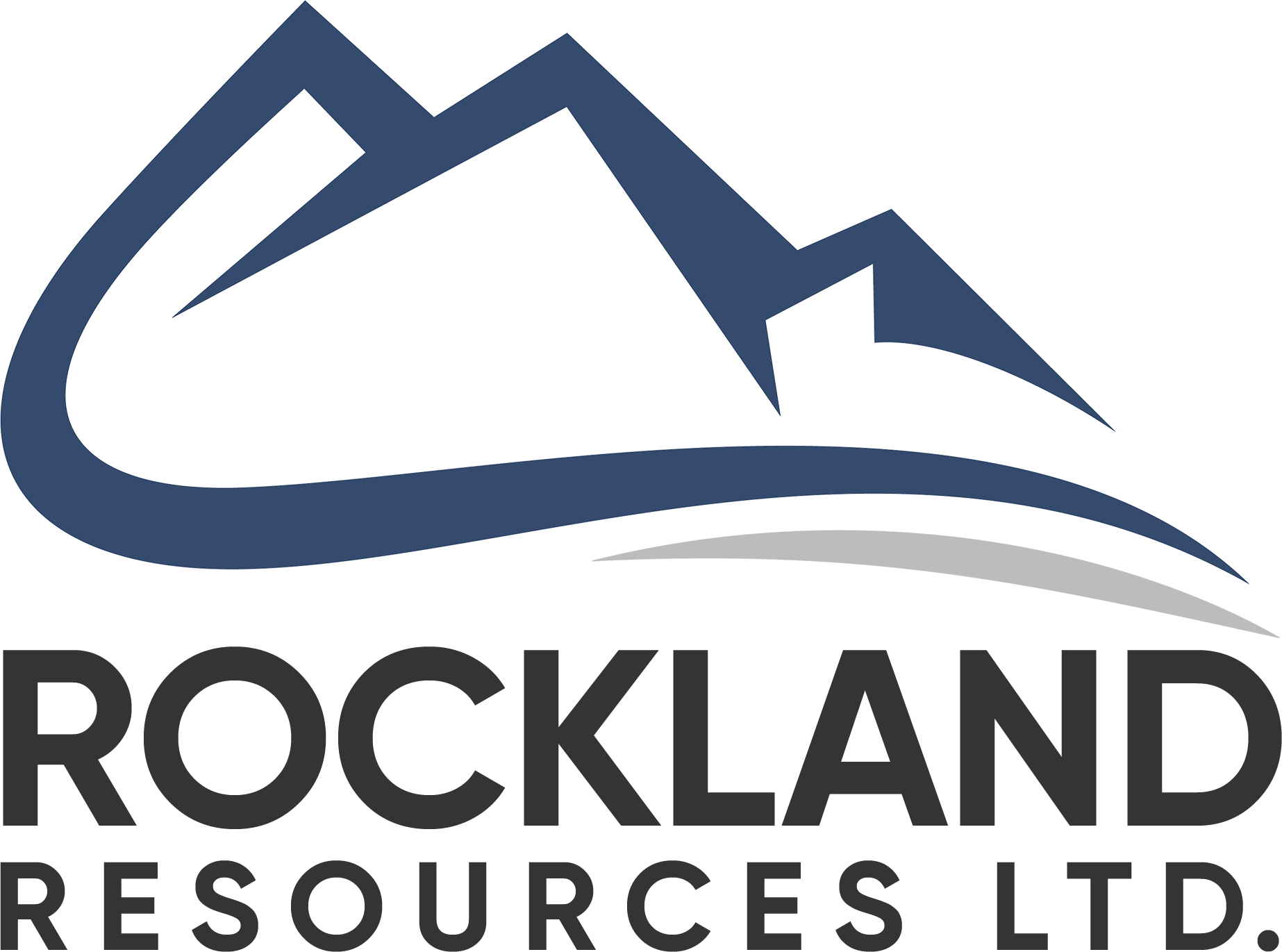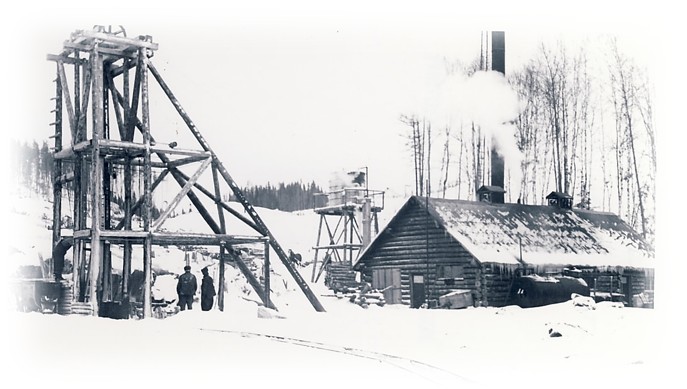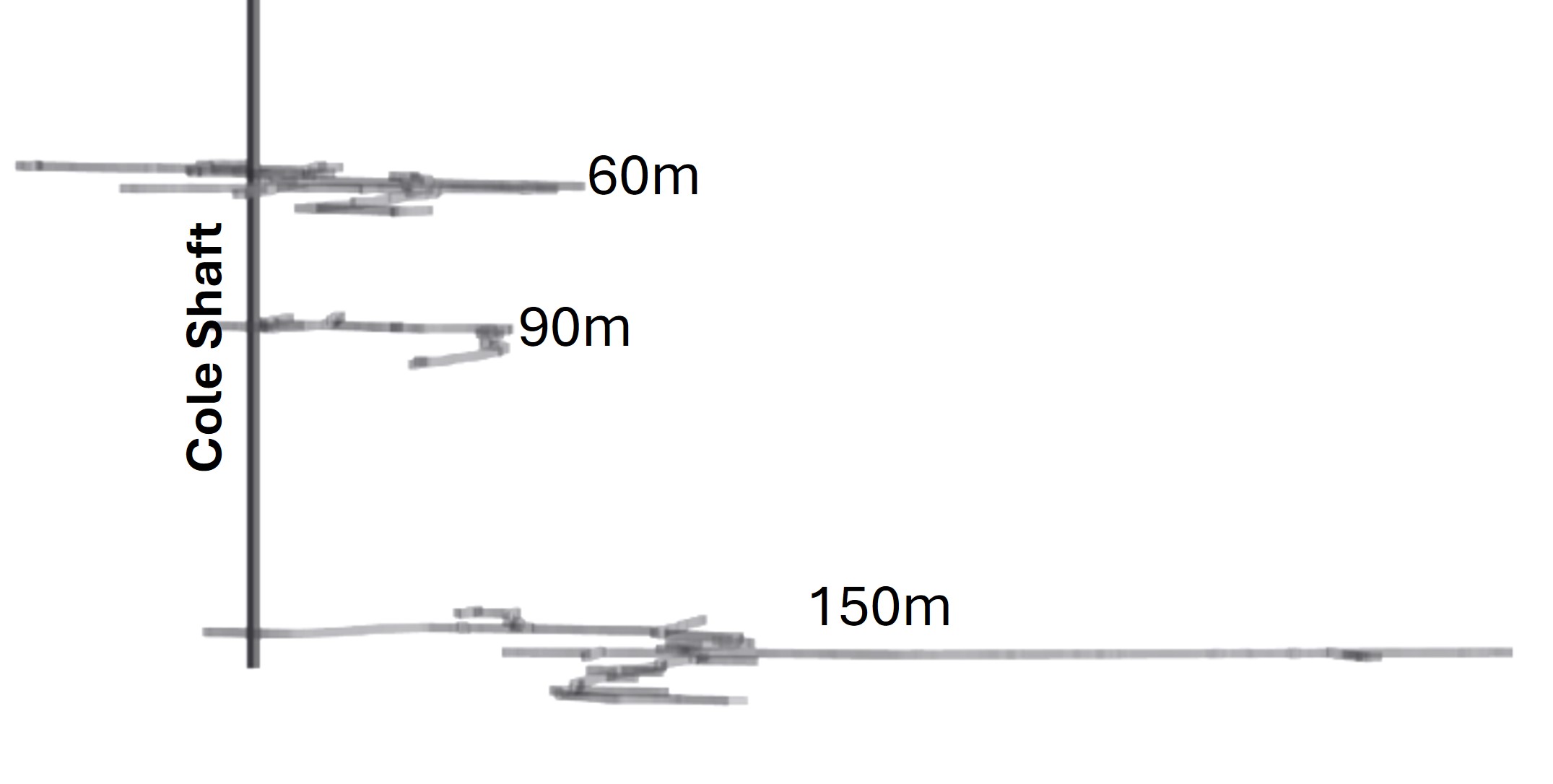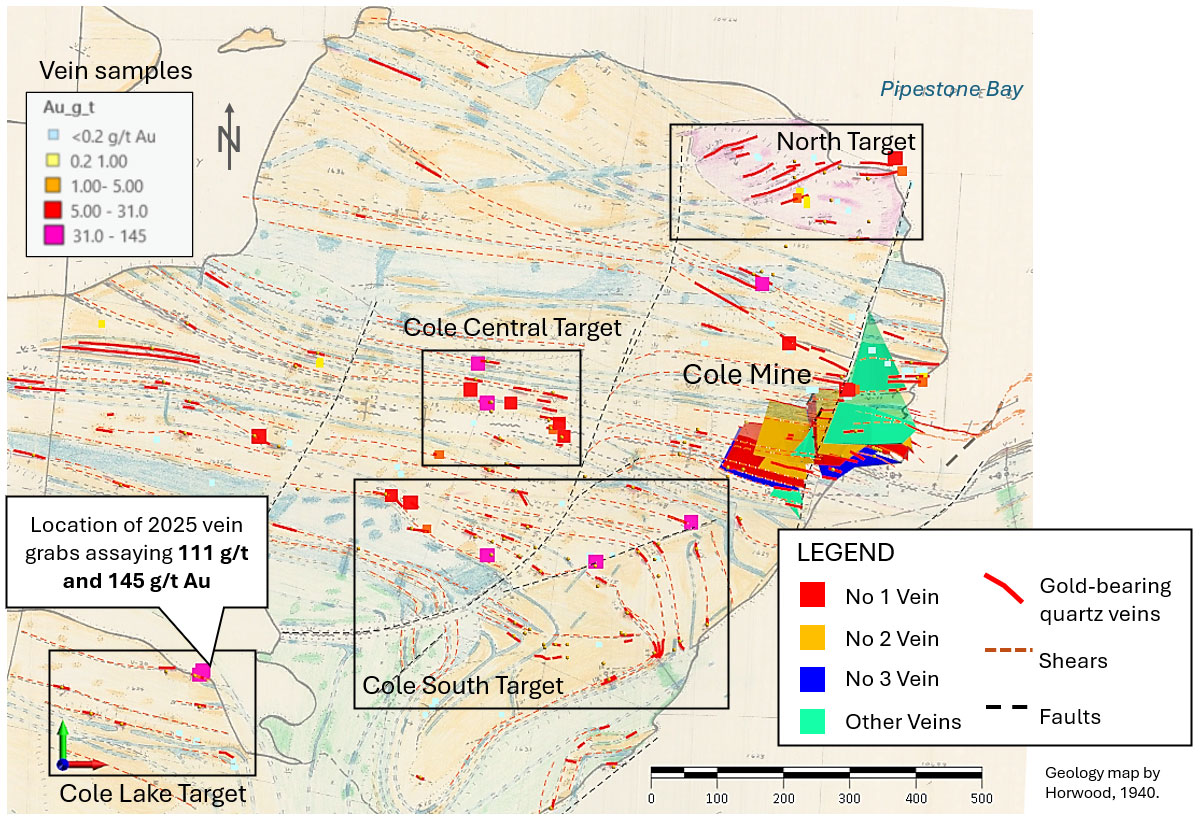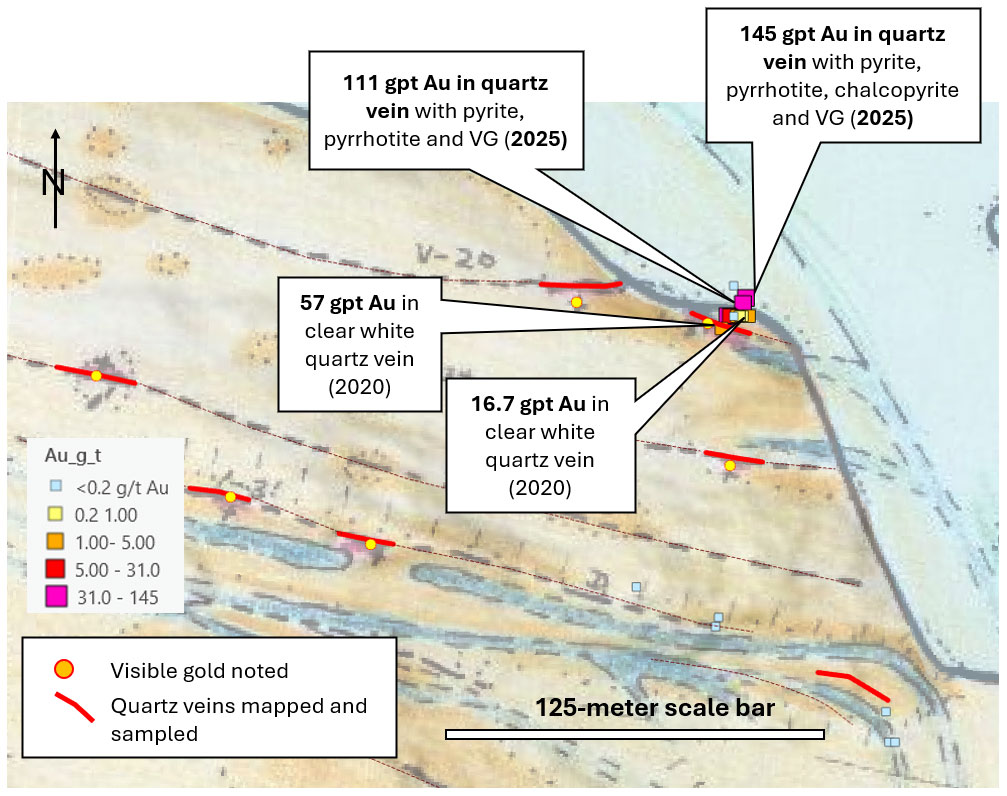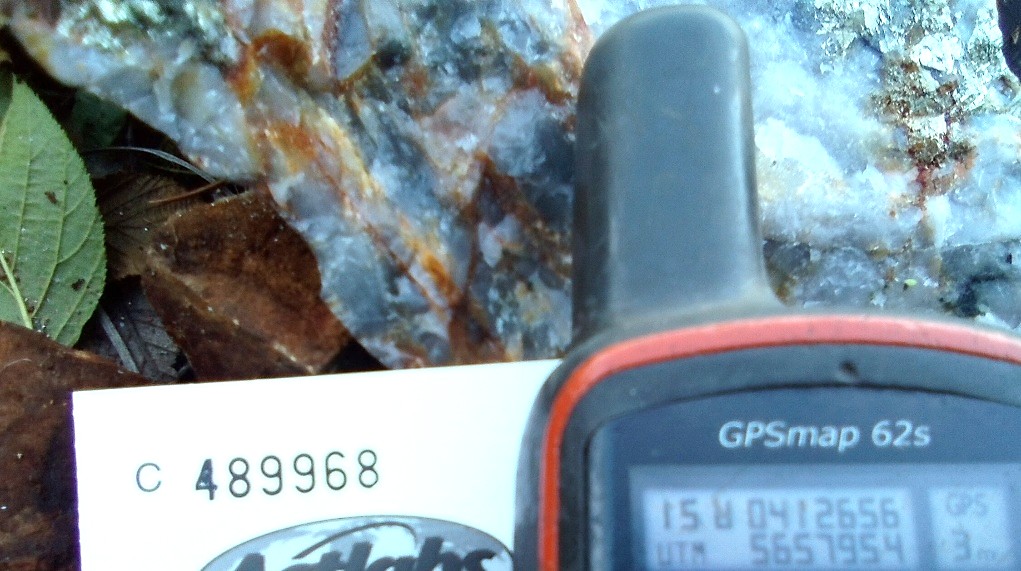Cole Gold Mines
Exploring for high-grade gold in the prolific Red Lake Mining District
World-Class Location
Red Lake Gold District
The Red Lake mining camp is one of the most prolific gold districts in Canada, having produced more than 30 million ounces of gold from 28 mines.
The Cole Gold Mines Property sits within the Pipestone Bay Deformation Zone, approximately 30 kilometres west of the Cochenour, Campbell, and Red Lake Mine Complex.
Neighboring Operations
A Rich Legacy
History of the Cole Gold Mine
Exploration and mine development work was initiated by J.Y Cole, Jr, and subsequently by Cole Gold Mines.
By 1937, the shaft was deepened to 530 feet (161m) and additional levels at the 300-, 400- and 500-foot levels were established.
Cole Gold Mines Ltd (1926–1938) was active on the property with surface prospecting, stripping, mapping, trenching and sampling, identifying dozens of gold-bearing veins on the property.
The Cole mine is considered a non-producing historic gold mine. Aside from recovering gold from underground development, the veins at the Cole mine are still intact.
Exploration Focus
Vein Target Areas
Multiple vein targets have been identified on the Cole Gold property.
Target areas are defined by visible gold-bearing quartz veins that have been mapped and sampled on the property, historically (1930s-1970s) and recently (2020, 2021 and 2025).
Vein target areas are of similar size as the Cole mine target area.
Cole Lake Target
Two 2025 grab samples from outcrop of Vein No 20 returned gold by gravimetric results of 111 gpt Au and 145 gpt Au.
Veins are dark grey to smoky quartz.
This vein outcrop is 1 kilometer southwest of the Cole mine.
Cole Central Target
Historic mapping and sampling has identified multiple visible-gold-bearing quartz veins.
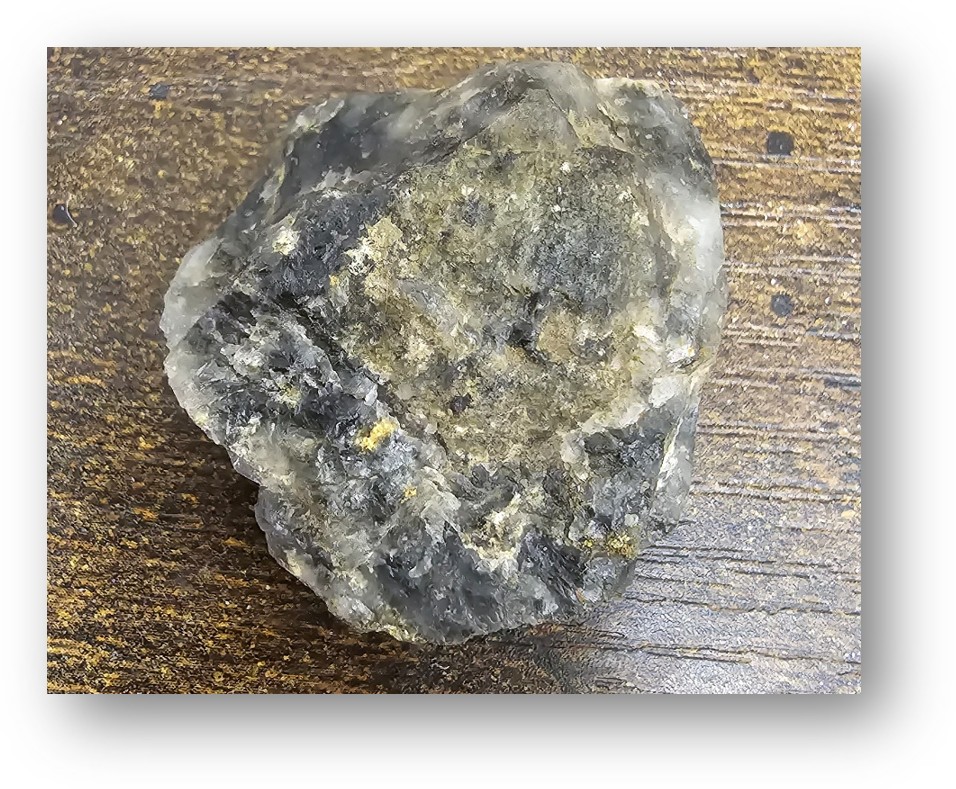 Coarse visible gold in smoky quartz vein grab sample from the Cole Property.
Coarse visible gold in smoky quartz vein grab sample from the Cole Property.
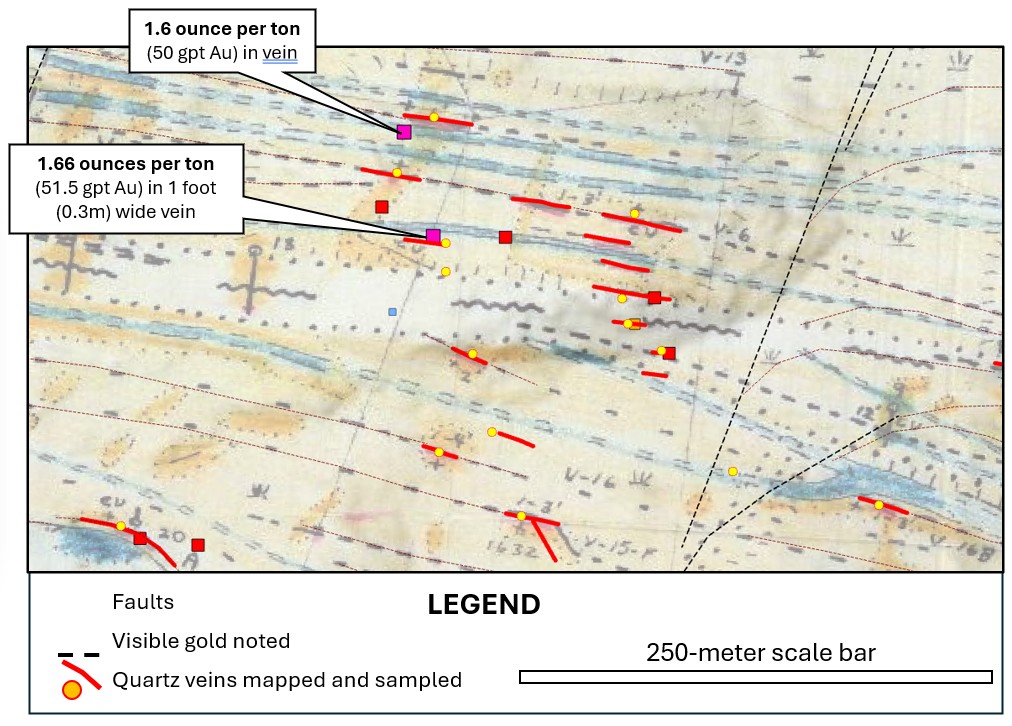
Cole South Target
Structurally and lithologically controlled gold-bearing quartz veins.
- More than 30 counts of visible gold
- Veins dip 65-75° to northeast, similar to veins at Cole mine
- Historic hole DD12 drilled into the sheared lithology contact: 4.7m wide, high-grade with 13 veins
- Cole South target is drill ready
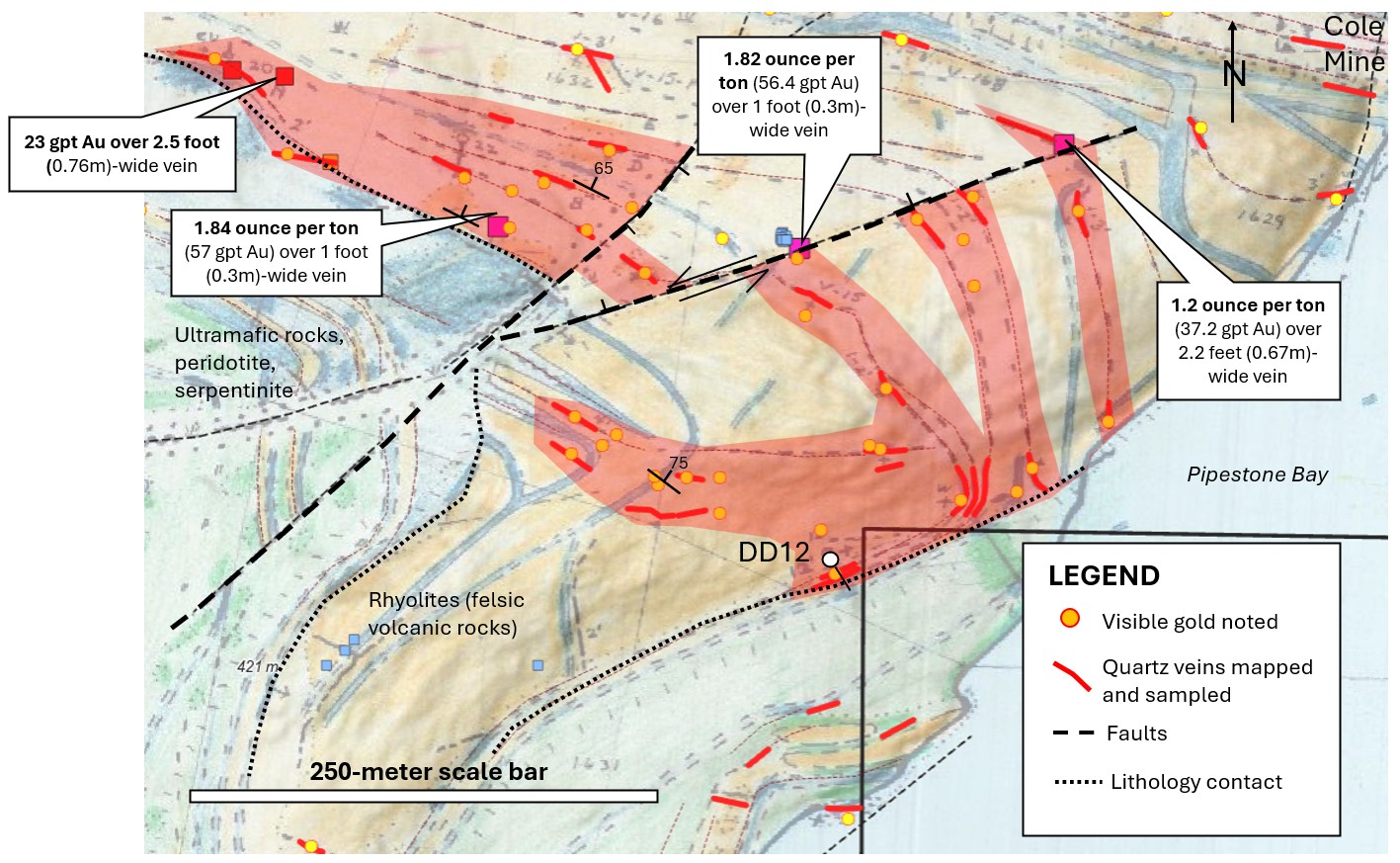
Historic Hole DD12
Historic drill log for DD12 from 1930s Cole Gold Mining time was found in the local library.
Historic hole 12 intersected a steeply dipping, high gold grade, vein set, 4.7m true width and containing 13 veins.
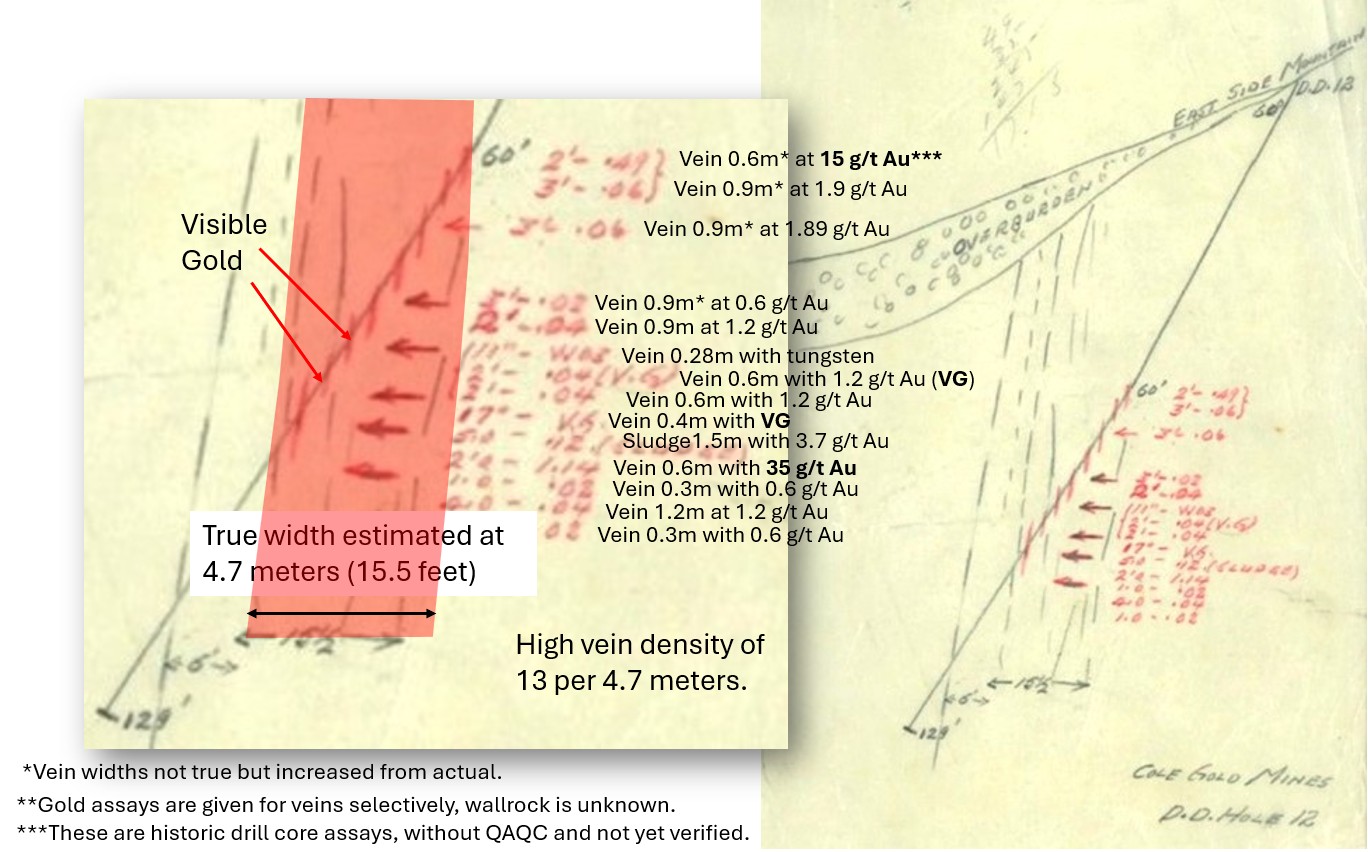 *Historic drill core assays, without QAQC and not yet verified.
*Historic drill core assays, without QAQC and not yet verified.
Cole North Target
The Cole North vein target is composed of multiple subparallel quartz veins that are visible gold bearing.
Veins are hosted in an intrusive rock and controlled by two north-south trending strike slip faults. Vein widths were mapped in the range of 1-6 feet (0.3-1.8m).
Veins identified through historic mapping and sampling include Nos 26, 27, 30 and 31. Vein 26 dips north and vein 30 dips south.
The Cole North vein target area is 300m long by 200m wide and is open to the East, under Pipestone Lake.
Historic mapping and sampling has identified multiple visible-gold-bearing quartz veins located 400 meters North of the Cole gold mine.
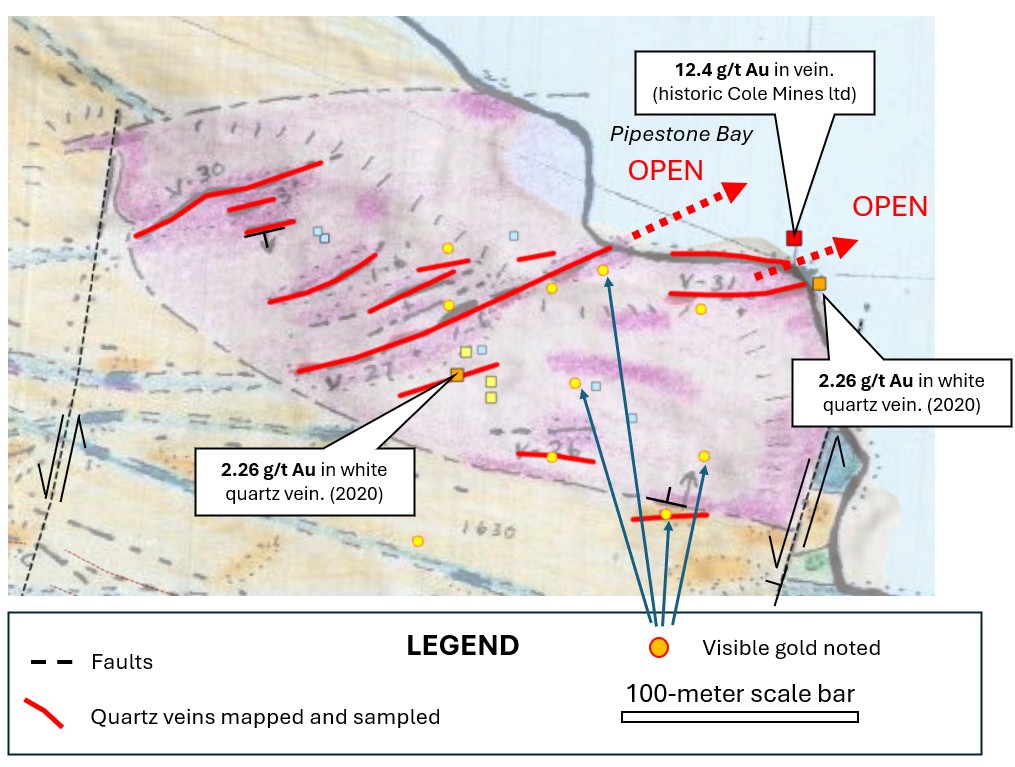
Historic Discovery
Cole Gold Mine Underground
Underground mine maps and drill sections were recently found in a public local library in the town of Red Lake.
Kerr Addison did not have access to these maps. These maps were used to model the gold-bearing veins of the historic Cole Gold mine in 3D.
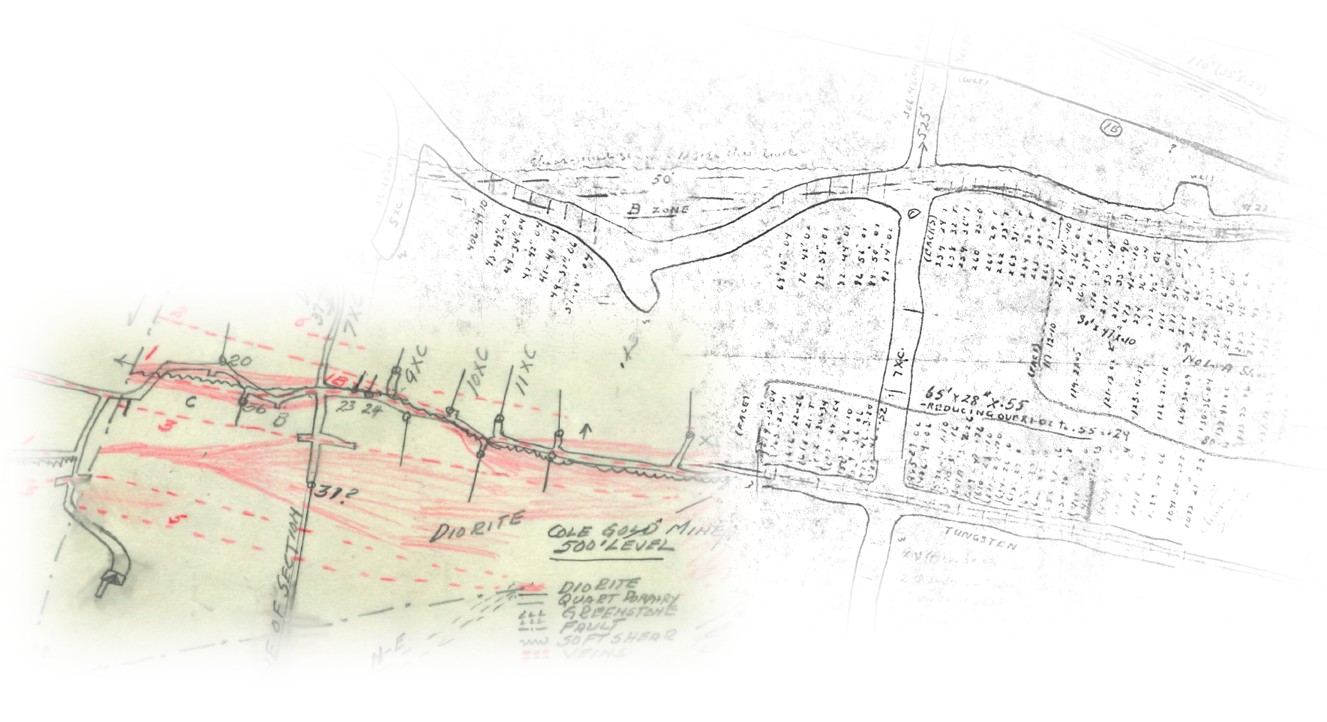
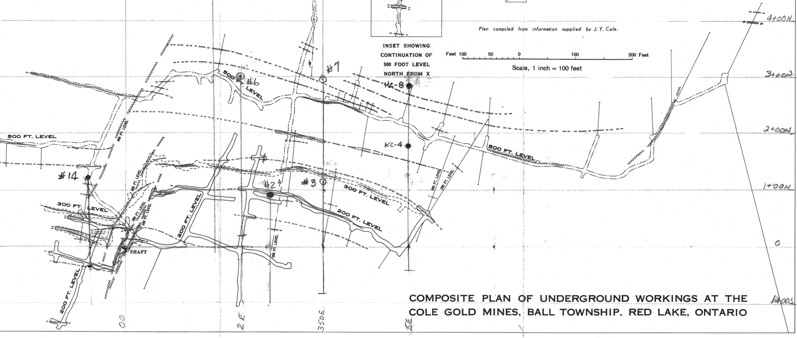
3D Gold Vein Model
The underground gold-bearing vein system has been modelled in 3D.
Based on historical data, the veins at Cole Gold Mine extend 300-400 meters along strike and are around 0.6 to 1.2m in width.
The veins are controlled by two northeast trending strike-slip faults (grey planes) with vein offsets of around 30 to 50m.
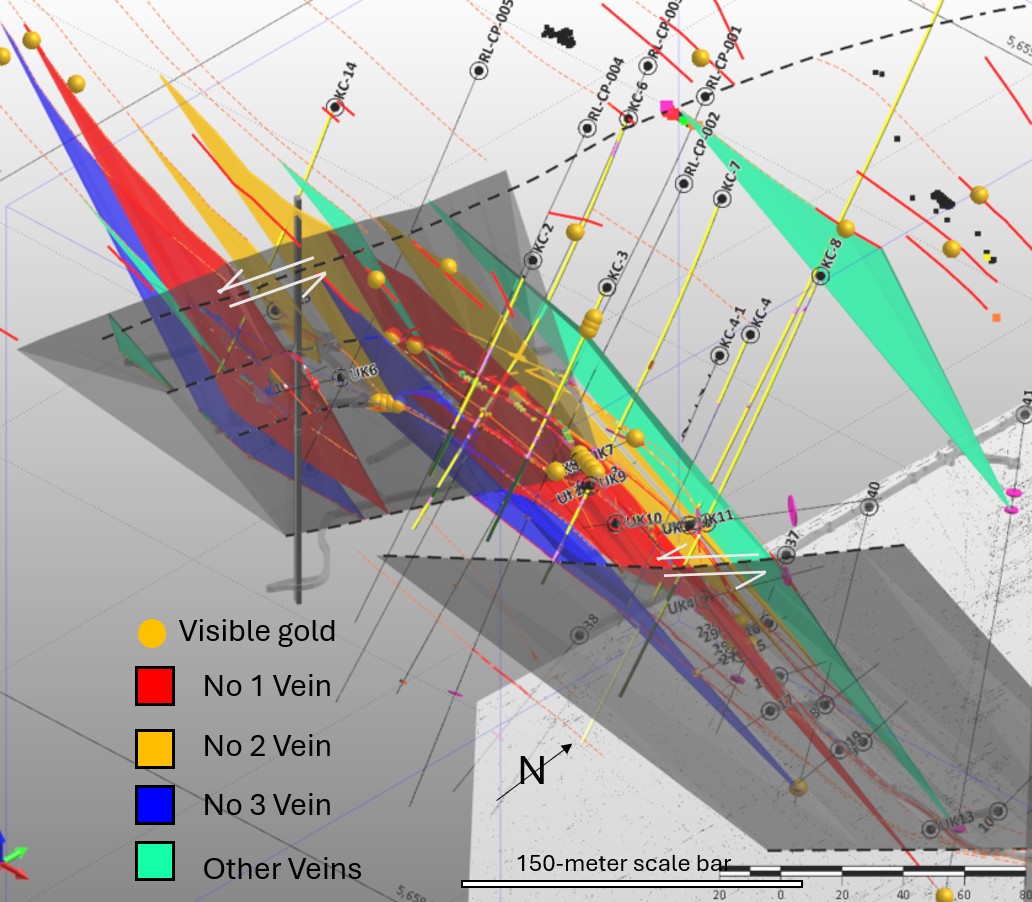
Technical Data
Cole Gold Project: Veins 1, 2 and 3
The modelled veins at Cole Gold Mine must be re-drilled by modern methods, including insertion of blanks, duplicates and certified standards (QAQC) to get NI-43-101 compliant gold grades and widths for the veins.
| Vein Number | Strike Length (m) | Average Width (m) | Gold Grades (g/t Au) | Average Dip | Comments |
|---|---|---|---|---|---|
| No 1 | 130m west of main fault 250m east of main fault Total strike: 380m |
0.7 to 1.2 m (locally up to 1.72m) |
3.0 to 18.3 g/t Au* | 65-70° | Comprises at least 3 veins plus small spurs. |
| No 2 | 80m west of main fault 160m east of main fault Total strike: 240m |
0.6 to 1.1 m (widths up to 3m) |
2.6 to 12.7 g/t Au* | 65-70° | Located on north side of No 1 vein. |
| No 3 | 140m west of main fault 145m east off main fault Total strike: 285m |
0.6 to 0.8m | 6.2 to 17.1 g/t Au* | 65-70° | Located on south side of No 1 vein. |
*These numbers are non-NI 43-101 compliant and based on historic mine maps, lacking QAQC procedures.
Gold in Wallrock
Historic underground channel sampling was limited to veins.
Wallrock carries gold as well as the veins.
2021 Drilling by Rockland shows additional, lower grade gold-mineralization in both the hanging wall rocks and footwall rocks of the main vein.
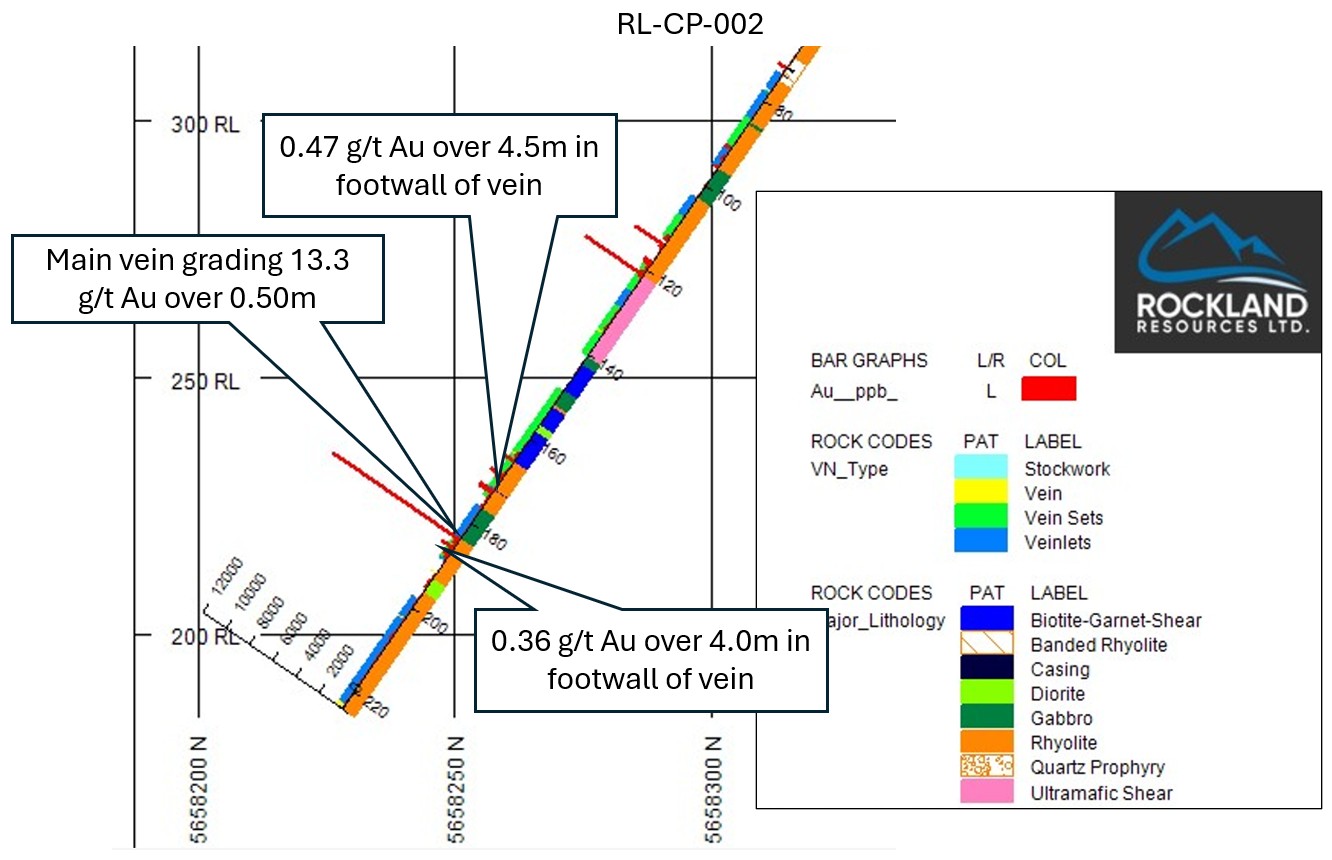
Exploration Potential
Depth Extensions
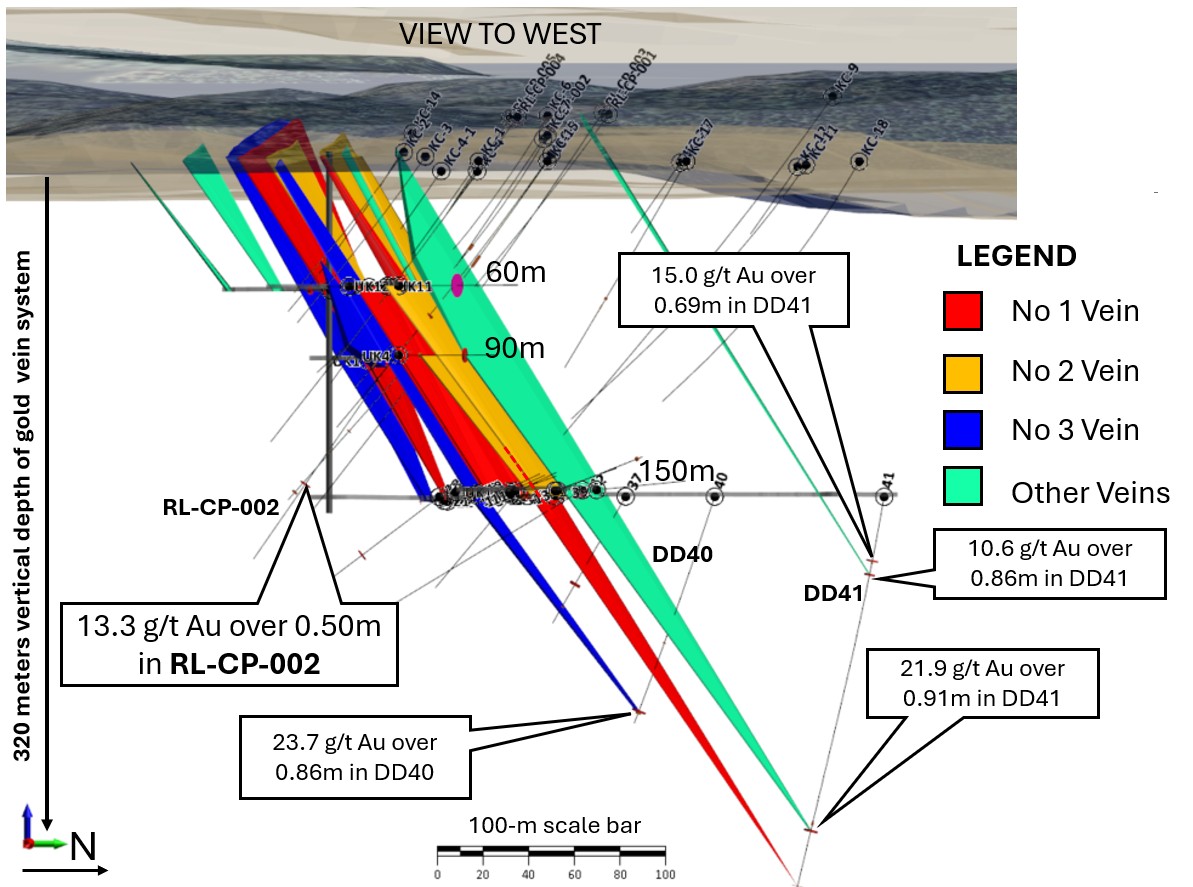
Historic underground drilling from level 500' (152m) shows veins continue at depth.
In 2021, Rockland Resources drilled 13.3 g/t Au over half a meter in hole RL-CP-002.
Total vertical depth of drilled gold mineralization is ~320 meters.
District Context
Depth of Gold Mines in Red Lake Gold District
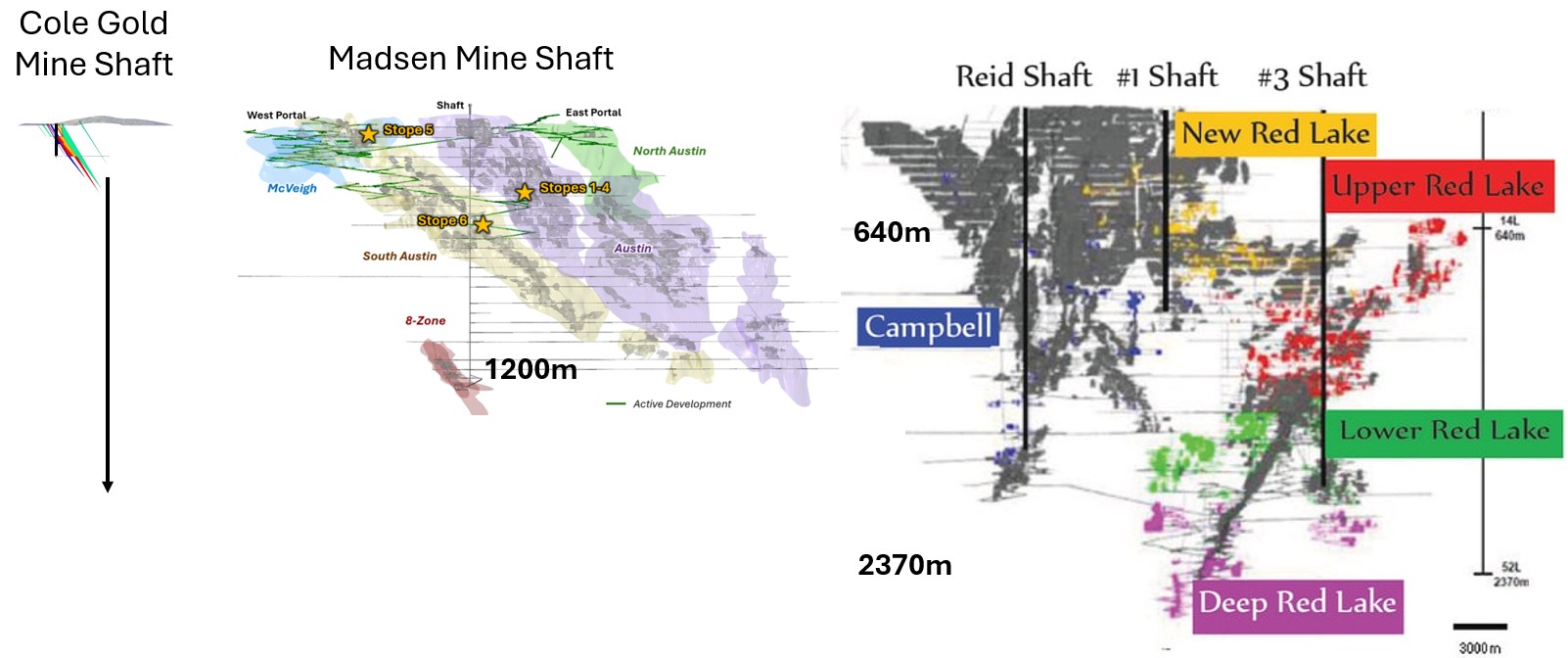
Cole Gold Mine
Gold has been drilled down to a depth of 320m, with a lot of depth potential.
West Red Lake Gold
Madsen mine was historically mined to a depth of 1200 meters. Gold is drilled at a vertical depth of 1373m.
Red Lake Gold Mines
The gold mines in Red Lake Gold District continue to more than two kilometers depth.
Technical Analysis
Drone-Supported Surveys Targeting Lithology Contact
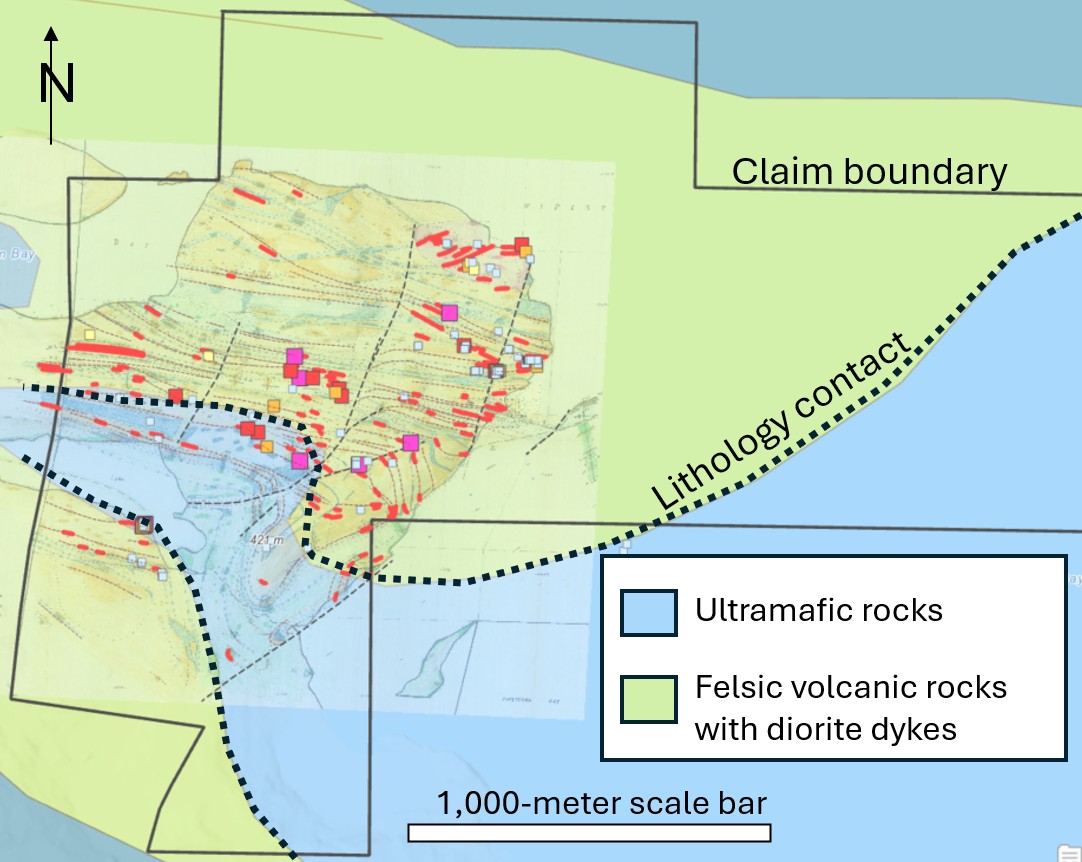
The Cole Gold Property is located in the pressure shadow of an ultramafic body that has intruded into, and been rotated by, a double-plunging fold system with a strong east-west trending shear following the fold axis.
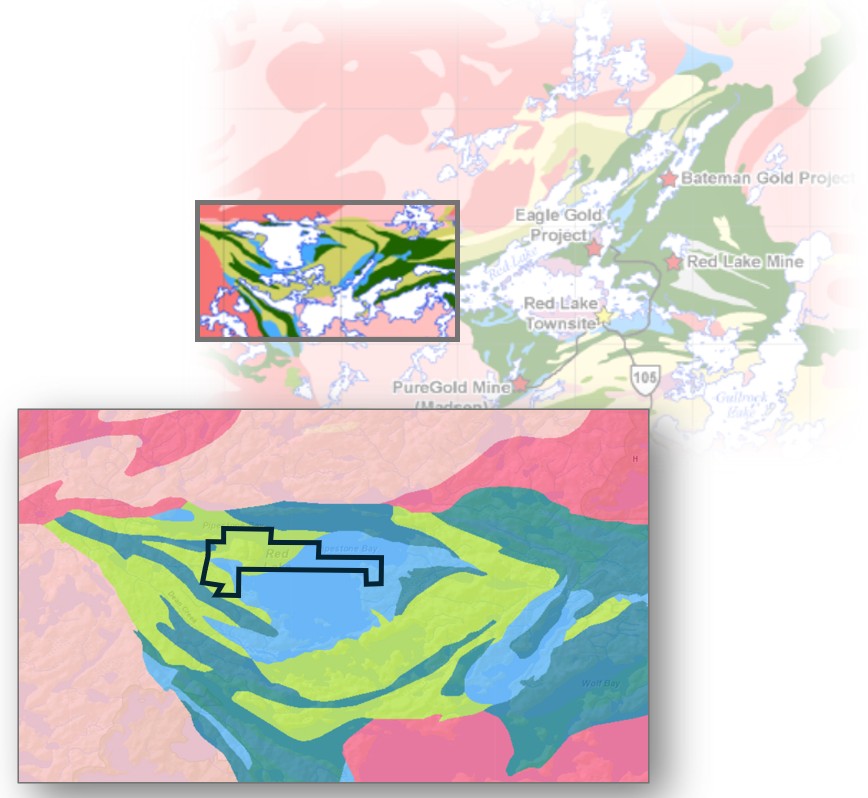
Looking Ahead
Proposed 2026 Exploration Plan
Drone Survey
Magnetics, TopographyDrone-supported magnetic, high-resolution orthoimagery and topography surveys → identify major structures and magnetic lows.
Diamond Core Drilling
At Cole MineBuild ice road to site along Pipestone Bay → for winter drilling.
Grid drilling at the Cole Gold Mine to verify position and gold grades of the 3D vein system down to 400m vertical depth → towards definition of a NI 43-101-compliant Inferred Resource.
Strip, Trench, Map and Sample
Surface Vein ExposuresSummer program: stripping soil to expose, map and channel sample other vein targets on the Cole Property → Add vein targets to drilling pipeline.
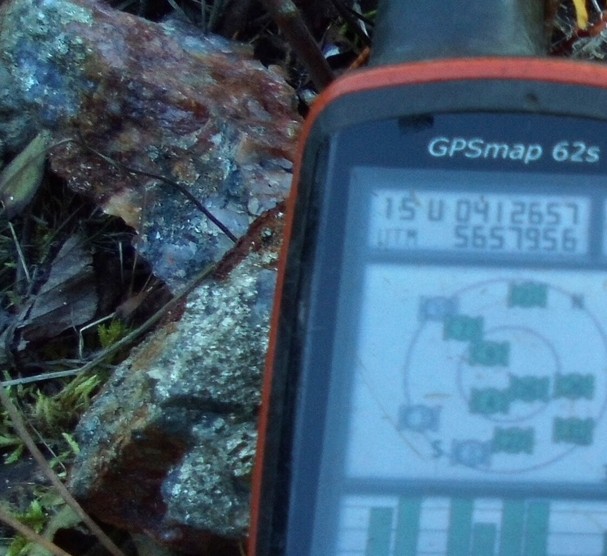 Vein No 20 grab sample 489969, which returned 145 g/t Au.
Vein No 20 grab sample 489969, which returned 145 g/t Au.
Analysis Methods
Gold analysis of drill core and channel sampling will be done by Photon Assay. This method has an upper gold limit of 350 g/t Au, so samples don't have to be rerun.
Also, this method is faster, cheaper and uses large sample sizes (500g) and no pulverizing is needed.
An extensive channel sampling program will commence in summer 2026 on the other vein targets.
Cole Gold Mine Summary
There are multiple visible-gold-bearing vein targets defined on the Cole Property and recent grab sampling returned 111 g/t and 145 g/t Au from vein No 20.
A Micromine 3D model of the veins at Cole Gold Mine has been created, which will guide future drilling. Drilling is planned for early 2026, to drill test the veins at the Cole mine.
Gold analysis of drill core and channel sampling will be done by Photon Assay. This method has an upper gold limit of 350 g/t Au, is faster, cheaper and uses large sample sizes (500g).
An extensive channel sampling program will commence in summer 2026 on the other vein targets.
